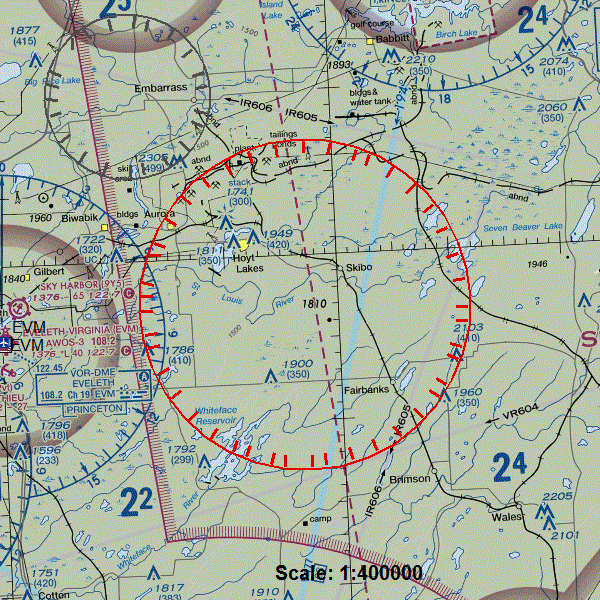Like those responsible for fighting California wildfires a year ago, those in charge of quelling a wildfire on the Iron Range are frustrated with drone operators and pilots who they say are interfering with firefighting efforts.
Last year, CalFire grounded all the aircraft fighting a wildfire in the San Bernardino mountains after pilots saw two drones nearby.
Minnesota hasn’t done that yet but a news release today from the Minnesota Interagency Fire Center said aviators are getting too close to planes fighting the Skibo wildfire.
Over the last few days, there have been at least two intrusions – one was a private airplane, the second an unmanned aircraft system (UAS) also known as a drone.
During fire season, the Minnesota wildfire agencies use aircraft to detect and suppress wildfires. At times of increased fire danger, up to 40 aircraft may be coordinated through the aviation staff at the Minnesota Interagency Fire Center.
When aircraft are needed on a wildfire, oftentimes a temporary flight restriction (TFR) will be placed on the airspace above and around the fire. This helps ensure the safety of pilots and firefighters. A TFR prohibits other aircraft from entering the area, so the aircraft involved in suppression and the air attack (air traffic controller in the sky) can operate without interference.
If an unauthorized plane or a drone is spotted over fires, aerial firefighting operations must immediately cease.
Those operating an unapproved aircraft inside a TFR are subject to a variety of penalties such as suspension of pilot certificate and fines.
Wildland fire agencies are working with organizations, such as the “Know Before You Fly” program, to provide UAS users with safe and responsible flight information. Also, the Federal Aviation Administration (FAA) is creating a plan for safe and staged integration of UAS into the National Airspace System.
The agency didn’t say exactly when the incursions into the now-restricted airspace occurred. The TFR (flight restriction) was posted by the FAA on Sunday at 9 a.m.
The TFR system, imposed after 9/11, is, at best, clumsy. There’s no perfect system for alerting pilots that one exists. Pilots aren’t required to be talking to air traffic control and most don’t, particularly in a comparatively barren airspace like the Iron Range.
A pilot could call an FAA flight service station and ask about TFRs, but they’re so seldom posted that most never do. And under FAA rules, only the pilot is responsible for figuring out whether one exists.
How a plane strays into the airspace is pretty easy to see, based on the FAA’s map of the affected area.
The affected area lies just to the east of the Virginia-Eveleth airport. Planes arriving from the east would normally descend into the airspace that is now off-limits. Add in a giant plume of smoke and it might provide a curiosity that’s too tempting to resist, particularly since the automated weather broadcast that every pilot would listen to when approaching the airfield is making no mention of the flight restriction that exists just to the east.
What’s the big deal? Consider the message one air tanker pilot posted on NewsCut last year.
I did drops yesterday which involved a hard push and descending turn down a very steep 3,000′ slope to deliver the load of retardant to a gap in the fire line.
The area was very mountainous, and the exit involved passing through smoke and coming off of burning ponderosa and lodgepole that were exhibiting extreme fire behavior. Helicopters were working below, in and out of the smoke.
Despite the steep vertical descent, at idle I got a stall buffet close to the tree top canopy, and then had to retract flaps mid drop as the airspeed jumped through the flap limits.
Worrying about a UAV on that drop is the last thing in the world that I’d have wanted, and it would be very foolish to suggest that it doesn’t present a hazard, or that removing aircraft from the fire area upon discovery of an intruding unmanned asset is unwarranted. it’s very warranted.
“If someone wants to play with their quadcopter, go do it where it won’t cause loss of life and property or put critical assets at risk,” the tanker pilot said.

